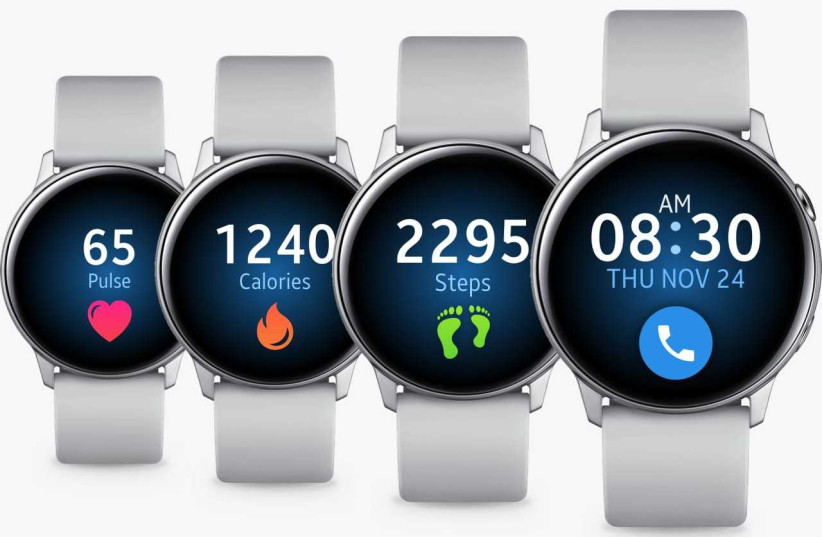People are increasingly monitoring the functions of their bodies with “smart” accessories. Watches and rings track vital signs, while certain eyeglasses now come with cameras and microphones. Wearable tech has even broached brooches. Yet certain accessories have yet to get the smart touch.
Body temperature is an important vital sign that can indicate fever and is known to be correlated with activities such as eating, exercise, and stress. However, continuous temperature monitoring poses a significant challenge.
Researchers at the University of Washington in Seattle have now introduced the thermal earring – a wireless wearable that continuously monitors a user’s earlobe temperature. The prototype is about the size and weight of a small paperclip and has a 28-day battery life. A commercial version is not yet available.
The earring could be personalized with gemstones or fashion designs made of resin without negatively affecting its accuracy. A magnetic clip attaches one temperature sensor to a wearer’s ear while another sensor dangles about two-and-a-half centimeters below it to estimate room temperature.

In a study of users, the earring outperformed a smartwatch at sensing skin temperature during periods of rest. It also showed promise for monitoring signs of stress, eating, exercise, and ovulation.
They published their findings in the Proceedings of the ACM on Interactive, Mobile, Wearable, and Ubiquitous Technologies under the title “Thermal Earring: Low-power Wireless Earring for Longitudinal Earlobe Temperature Sensing.”
An engineering challenge
“I wear a smartwatch to track my personal health, but I’ve found that a lot of people think smartwatches are unfashionable or bulky and uncomfortable,” said co-lead author Qiuyue (Shirley) Xue, a doctoral student in the university’s School of Computer Science and Engineering. “I also like to wear earrings, so we started thinking about what unique things we can get from the earlobe. We found that sensing the skin temperature on the lobe, instead of a hand or wrist, was much more accurate. It also gave us the option to have part of the sensor dangle to separate ambient room temperature from skin temperature.”
Creating a wearable small enough to pass as an earring yet robust enough that users would have to charge it only every few days presented an engineering challenge.
“It’s a tricky balance,” said co-lead author Yujia (Nancy) Liu, who was a master's degree student in the electrical and computer engineering department when doing the research and is now at the University of California at San Diego. “Typically, if you want power to last longer, you should have a bigger battery – but then you sacrifice size. Making it wireless also demands more energy.”
The team made the earring’s power consumption as efficient as possible while also making space for a Bluetooth chip, a battery, two temperature sensors, and an antenna. Instead of pairing it with a device, which uses more power, the earring uses Bluetooth advertising mode – the transmissions a device broadcasts to show it can be paired. After reading and sending the temperature, it goes into deep sleep to save power.
Because continuous earlobe temperature has not been studied widely, the team also explored potential applications to guide future research. In five patients with fevers, the average earlobe temperature rose 5.92 degrees Celsius compared with the temperatures of 20 healthy patients, suggesting the earring’s potential for continuous fever monitoring.
“In medicine, we often monitor fevers to assess response to therapy – to see, for instance, if an antibiotic is working on an infection,” said co-author Dr. Mastafa Springston, a clinical instructor at the emergency medicine department in the university’s School of Medicine. “Longer term monitoring is a way to increase the sensitivity of capturing fevers since they can rise and fall throughout the day.”
While core body temperature generally stays relatively constant outside of fever, earlobe temperature varies more, presenting several novel uses for the thermal earring. In small proof-of-concept tests, the earring detected temperature variations correlated with eating, exercising, and experiencing stress. When tested on six users at rest, the earring’s reading varied by 0.32 C on average, placing it within the range of 0.28 C to 0.56 C necessary for ovulation and period tracking; a smartwatch varied by 0.72 C.
“Current wearables like Apple Watch and Fitbit have temperature sensors, but they provide only an average temperature for the day, and their temperature readings from wrists and hands are too inaccurate to track ovulation,” Xue said, “so we wanted to explore unique applications for the earring, especially applications that might be attractive to women and anyone who cares about fashion.”
While researchers found several promising potential applications for the thermal earring, their findings were preliminary since the focus was on the range of potential uses. They need more data to train their models for each use case and more thorough testing before the device might be used by the public. For future iterations of the device, Xue is working to integrate heart rate and activity monitoring. She’s also interested in potentially powering the device from solar or kinetic energy from the earring swaying.
“Eventually, I want to develop a jewelry set for health monitoring,” Xue said. “The earrings would sense activity and health metrics such as temperature and heart rate, while a necklace might serve as an electrocardiogram monitor for more effective heart health data.”
